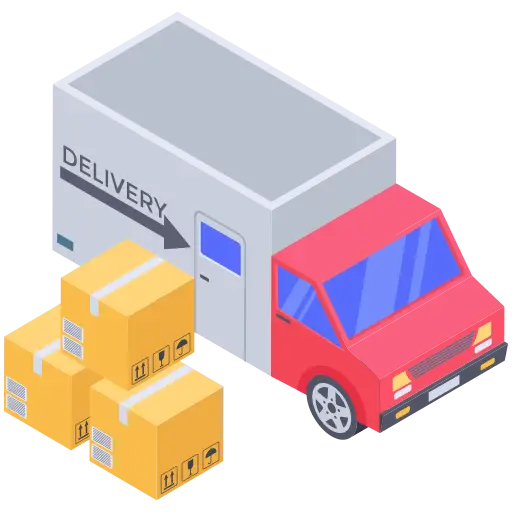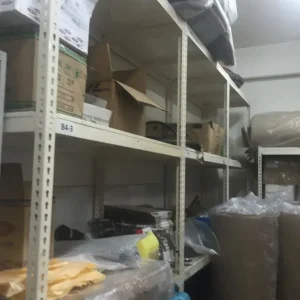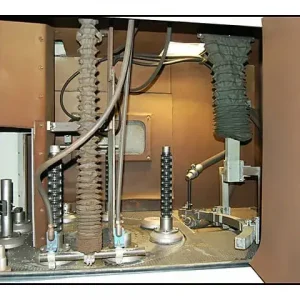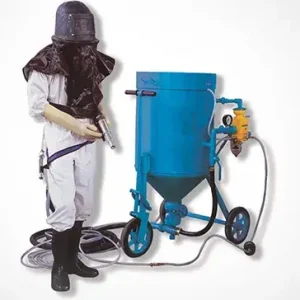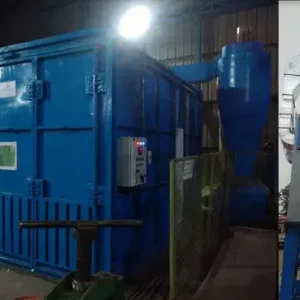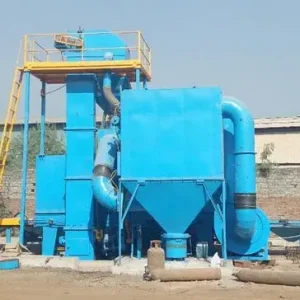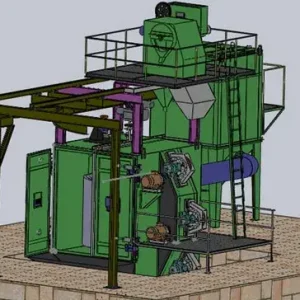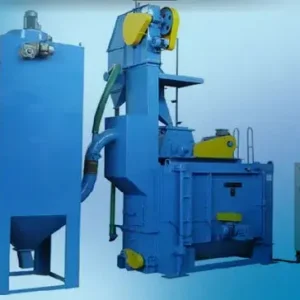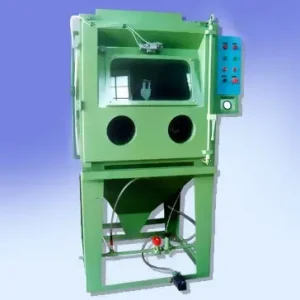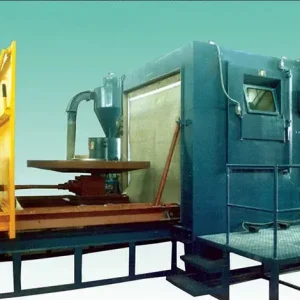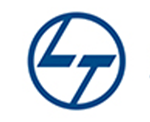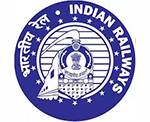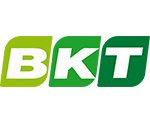By AeroWheel Surface Finishing
Shot blasting is a power-intensive process. Whether you’re operating a Tumblast, Table Type, or Spinner Hanger machine, the energy used to drive turbines, conveyors, dust collectors, and control systems can quickly add up. In today’s industrial climate—where energy costs continue to rise—improving energy efficiency isn’t just good for the environment; it’s smart business.
At AeroWheel Surface Finishing, we design machines with energy efficiency in mind. But regardless of the machine you use, there are practical, actionable steps every shop can take to reduce power consumption without compromising performance.
Here’s how you can start saving energy—and money—on your shot blasting operations.
1. Choose the Right Machine for the Job
Energy waste often begins with the wrong machine. If you’re using a large-capacity machine for small batches or lightweight parts, you’re likely using more power than necessary.
Tip:
Match the machine type and size with your workload. For example, use a Tumblast for bulk small parts and a Spinner Hanger for heavy, delicate components. Overpowered machines for small jobs lead to energy and media wastage.
2. Maintain Proper Abrasive Flow and Recycle Efficiency
Abrasive that’s not flowing correctly—or is being wasted—forces your turbines to work harder and longer.
Suggestions:
- Keep the abrasive separator clean and properly adjusted.
- Avoid overfeeding or underfeeding abrasive to the blast wheel.
- Use high-quality, reusable abrasive to reduce breakdown and energy loss.
Result:
Smooth flow and cleaner recycling improve both cleaning efficiency and energy usage.
3. Optimize Blasting Cycle Time
Longer isn’t always better. Some operators run machines longer than necessary, wasting both energy and abrasive. Over-blasting doesn’t improve surface quality—it just wears out parts and increases power bills.
What to do:
- Test and set the shortest effective blast duration for each component.
- Train operators to avoid unnecessary blasting time.
- Use timers and automation to control cycles precisely.
4. Keep Blast Wheels and Motors in Top Shape
Worn or unbalanced blast wheels require more energy to rotate and deliver weaker results.
Energy-saving actions:
- Inspect and replace blades, impellers, and control cages regularly.
- Ensure motors are aligned and well-lubricated.
- Check for any resistance or overheating in mechanical parts.
Efficient mechanical performance means less energy wasted on friction or imbalance.
5. Turn Off Idle Machines
It may sound obvious, but many shot blasting machines are left running between jobs—wasting electricity even when not in use.
Implement policies like:
- Shutting down machines during lunch breaks or long gaps.
- Installing auto shut-off timers for idle timeouts.
- Using central controls to manage multiple machines efficiently.
These simple habits can lead to significant energy savings over time.
6. Invest in Energy-Efficient Dust Collection
Dust collectors are essential—but also among the most power-hungry components.
Tips to reduce their energy impact:
Importance of Airflow Design in Blast Rooms
Why Shot Blasting Is Crucial Before Powder Coating
Trusted Sand Blasting Machine Manufacturers in India
- Use variable frequency drives (VFDs) to adjust fan speed based on dust load.
- Clean or replace filters regularly to ensure proper airflow.
- Upgrade to modern dust collection systems with energy-saving technology.
A well-maintained dust collector consumes less power and improves air quality.
7. Seal the Cabinet and Ducts Properly
Leaky blast cabinets or dust extraction ducts can cause loss of pressure, poor airflow, and higher power draw.
Prevent this by:
- Regularly inspecting gaskets, seals, and door locks.
- Checking for air leaks around joints and flanges.
- Sealing and insulating exposed ductwork.
Proper sealing ensures your equipment runs more efficiently with less energy loss.
8. Automate Where Possible
Automation reduces human error and controls energy use better than manual operation. It also improves productivity and consistency.
Recommended automation features:
- Programmable cycle timers
- Blast wheel speed control
- Auto start-stop for conveyors, dust collectors, and turbines
- Real-time power consumption monitoring
When integrated well, automation systems cut energy waste while maintaining output quality.
9. Schedule Preventive Maintenance
Poorly maintained machines run harder, slower, and hotter—all of which waste electricity.
Routine maintenance includes:
- Cleaning separators, filters, and conveyors
- Lubricating bearings and rotating parts
- Checking electrical connections and controls
- Replacing worn liners or blades on time
Well-maintained equipment is naturally more energy efficient.
10. Educate and Train Your Team
The most efficient machine will still waste energy if it’s operated carelessly.
Train operators to:
- Load machines efficiently
- Avoid over-blasting
- Shut down machines between shifts
- Report irregular performance early
A knowledgeable team is your first line of defense against energy waste.
Final Thoughts
Improving energy efficiency in shot blasting doesn’t require big investments—it starts with awareness and small changes. By applying these tips, you’ll not only reduce electricity bills but also extend your machine’s lifespan, improve output, and contribute to a greener manufacturing environment.
At AeroWheel Surface Finishing, we build machines designed for long-term, efficient performance—and we offer full support to help you get the most from every unit of energy.
Want help auditing or optimizing your blasting setup for energy savings?
Talk to our technical team today.

